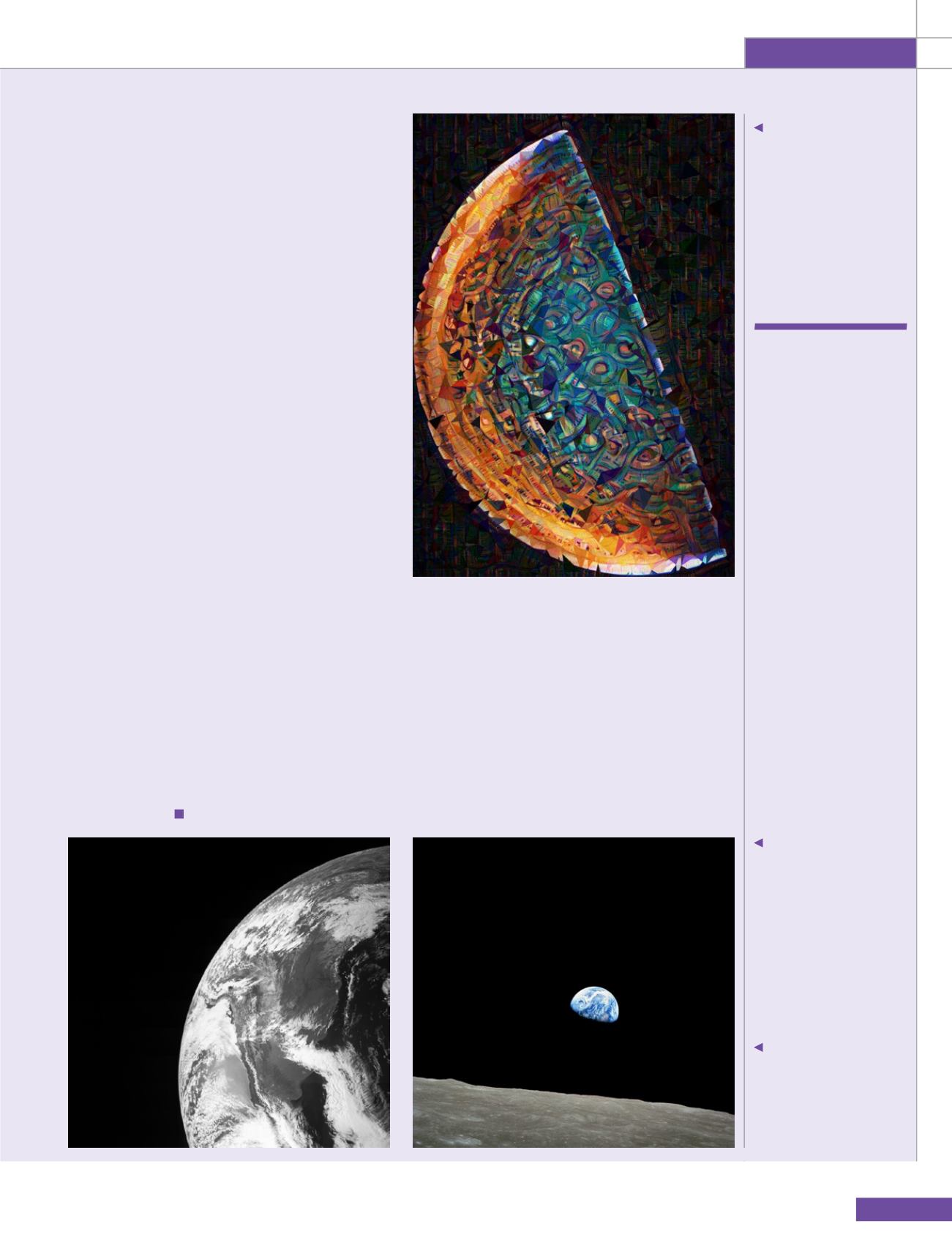
ROOM
105
Space Lounge
A colourful, graphically
embellished interpretation
of Jupiter’s south pole by
citizen scientist Michael
Ranger.
The JunoCam caught
this image of Earth during
the 9 October 2013
gravity-assist flyby on its
way to Jupiter.
‘Earthrise’ over the
lunar horizon was taken
by the Apollo 8 crew
(December 1968), showing
Earth for the first time as
it appears from deep
space.
JunoCam was
purposefully
designed
to allow
the public
to actively
participate in
the mission
and understand what’s out there. We separate
ourselves in a way that provides us with a closer
view of these other planets but, perhaps more
importantly, we are provided with another
amazing vantage point for better understanding
our own home planet Earth. We are all Earthlings!
In all that we see and explore in our universe we
will by our nature relate it back to ourselves and
Earth. To see Jupiter more closely helps us also see
Earth more closely too.
Juno’s flight depended on some assistance from
Earth - a gravity assist from Earth to boost it with
the additional velocity necessary to take it on its
journey to Jupiter. During this pass of Earth, Juno
also had the opportunity to test its instruments
designed for close planetary encounters before
travelling all the way to Jupiter to find if they
would work or not. An awesome bonus from this
path are pictures of Earth from a spacecraft on its
way to Jupiter.
Such images from Juno remind us that we
are always learning more about ourselves when
we explore what surrounds us. These pictures
represent both all of humanity and the farthest
reaches of where human beings have actually
travelled. The famous ‘Earthrise’ picture was the
first time we saw this view of our home planet, of
ourselves, from deep space. In the words of Apollo
8 astronaut Bill Anders, “We came all this way to
explore the Moon, and the most important thing is
that we discovered the Earth.”
There is still so much more to come from Juno
and I eagerly await the results of this summer’s
encounter when Juno will fly directly over that
Great Red Spot. I can’t wait to see the artistic
and scientific expression that will come from
that encounter!
For more information about how to become
part of the JunoCam community -
/
Acknowledgements
My sincere thanks to the Juno Mission team for JunoCam, for inviting our
participation and for continuing to share the wonders of Jupiter and Earth
and our place amongst the beautiful universal art that surrounds us. Also,
special thanks to DC Agle at the Jet Propulsion Laboratory (JPL)/Caltech
who, in response to my out-of-nowhere weekend request, introduced me
to JPL senior research scientist Glenn Orton; and to Glenn, who I know
could share all the amazing Juno scientific findings with me but who
joyfully took the time to chat with me about the wonderful public outreach
and engagement and excitement that’s happening through JunoCam.
NASA/JPL-Caltech/Malin Space Science Systems
NASA
NASA/JPL-Caltech/SwRI/MSSS/Michael Ranger


